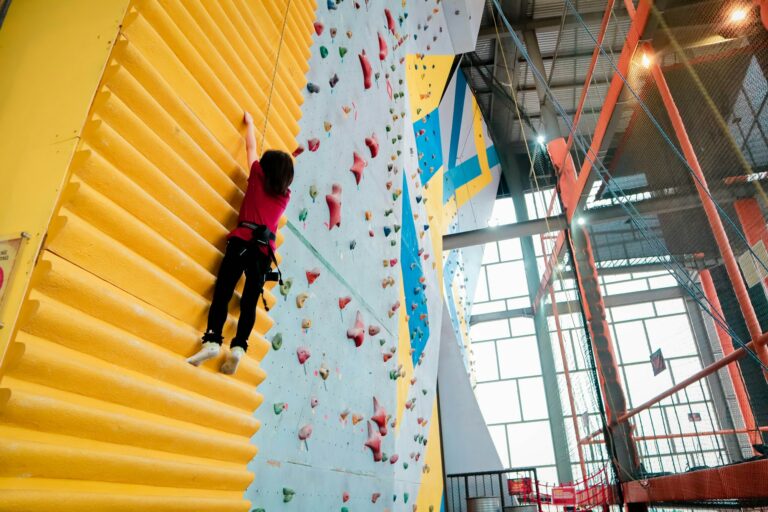For parents grappling with the digital tides of daily life, a knot of questions often forms: How much screen time is too much? Is that tablet truly a learning tool, or is it chipping away at your child’s well-being? Every beep, buzz, and notification stirs both fascination and unease—tempting, distracting, sometimes soothing, but not without consequence. The call to prevent screen addiction echoes through homes, fueled by concern for disrupted sleep, emotional upheaval, and stolen moments of family togetherness. Are boundaries really enough when the world seems to run on pixels? Here, you’ll find science-backed answers, practical strategies, and the reassurance that it is entirely possible to nurture healthier, stronger families—screen in hand, but not in control.
Understanding Screen Addiction: Medical Insights and Real-Life Concerns
The Nature of Screen Addiction
What exactly defines screen addiction, and why does it grip so tightly? The term refers to a compulsive, persistent pattern of digital device use—smartphones, tablets, laptops, televisions—so absorbing that stopping feels nearly impossible. Medically, the phenomenon mirrors other behavioral addictions: tolerance (needing more to feel satisfied), withdrawal (irritability or distress if denied), and a loss of interest in offline activities. For children, these symptoms may appear as meltdowns when devices are removed, persistent complaints of boredom, and avoidance of eye contact or social play.
Neuroscientists pinpoint the dopamine pathways in the brain—the same circuits activated by sugar or winning a game—as the stage where this drama unfolds. Each notification, like, or new level conquered provides a reward loop, intensifying the desire to return, again and again. Repeated exposure engraves these habits, making efforts to prevent screen addiction more pressing, particularly in the context of sensitive periods for brain development.
Why Prevent Screen Addiction? Evidence and Health Risks
Are the warnings exaggerated? The data says otherwise. Pediatricians, psychologists, and neuroscientists highlight multiple risks:
- Strained vision (digital eye fatigue, clinically termed “computer vision syndrome”)
- Sleep disturbances triggered by blue light altering circadian rhythms—medical studies consistently link increased screen time with reduced melatonin secretion, leading to later bedtimes and lighter, more fragmented sleep
- Weight fluctuations due to prolonged sedentary behavior and the so-called “snack-and-scroll” effect (where eating is paired mindlessly with digital entertainment)
More quietly but just as notably, children’s emotional worlds are shaped in these pixel-lit hours. Recent studies associate excessive use with higher rates of anxiety, depressive symptoms, and impaired executive function (difficulties with impulse control, planning, and flexible thinking). Every effort to prevent screen addiction not only supports current family harmony but also protects future emotional resilience.
Who Is Most Vulnerable? Age, Temperament, and Social Triggers
Infants and toddlers possess almost no internal brakes; their world is immediate and absorbing, amplifying the lure of screens. As children mature, peer influences, academic pressures, and the magnetic pull of multiplayer gaming add extra weight. Adolescents—awash in FOMO (fear of missing out) and rapid-fire social communication—are particularly sensitive, with social media platforms designed for continuous engagement.
Certain personality traits—impulsivity, low self-esteem, or difficulties in self-regulation—heighten the appeal of screen-based rewards. Children with ADHD or anxiety may find devices reassuring, yet these very tendencies can escalate the risk of dependency. The family environment—rules or lack thereof, communication patterns, moments of connection or isolation—profoundly impacts outcomes.
Causes and Consequences of Excessive Screen Use
What Drives Excessive Use? The Science of Habit Formation and Instant Gratification
Fast rewards, instant validation, and relentless novelty—this is the digital playground. Screen-based activities, from video games to endless scrolling on social media, are meticulously engineered to maximize engagement through variable-ratio reinforcement (unpredictable rewards that heighten anticipation and persistence).
Emotional triggers play a starring role. Boredom, stress, loneliness, and even minor daily frustrations are swiftly soothed by digital worlds—teaching the brain that screens are not just entertaining, but essential for emotional comfort. For many families, the lines blur: is the screen a pacifier or an educational ally?
Effects on Physical, Cognitive, and Emotional Development
The consequences, illuminated by medical evidence, ripple wide and deep:
- Neurological development: MRI studies show that overexposure during critical windows of neurodevelopment (especially under age three) can alter white matter integrity, slowing the formation of language pathways and weakening memory circuits.
- Vision and musculoskeletal health: Upward trends in myopia (short-sightedness) and musculoskeletal complaints (tech neck, rounded shoulders) trace directly to prolonged device use.
- Metabolic health and weight: Sedentary habits build subtly, raising the risk for overweight or insulin resistance. Snack consumption spikes during screen time—studies suggest multitasking blunts awareness of fullness, promoting overconsumption.
- Sleep architecture: Blue light suppresses natural melatonin release, leading to a destabilization of sleep phases. Children who use devices before bed fall asleep later, wake more frequently, and exhibit more pronounced mood fluctuations.
Emotionally, overuse chips away at emotional literacy, blurring children’s ability to recognize and manage their feelings offline. Academic skills and real-life social development may stall as well.
Recognizing Early Signs: When Should Parents Worry?
Age-Specific Warning Signs to Watch For
Spotting the warning signs early can make a world of difference. Here’s what parents might notice:
- Preschoolers: Explosive tantrums when screens are removed, fixation on digital play, reluctant interaction with peers, disinterest in tactile or outdoor activities.
- Primary school children: Refusal to join offline games, avoidance of family time, academic slips, and persistent irritability when not allowed screen access.
- Teenagers: Compulsive checking of devices (even at night), neglecting essential duties, social withdrawal, and heightened visible distress tied to social media.
Physical indicators may include headaches, tired eyes, neck pain, weight gain, and unwelcome changes in sleep patterns. Emotional symptoms—restlessness, anger, or sadness when screens are inaccessible—frequently emerge.
Red Flags: When Screens Become an Emotional Coping Mechanism
If a child automatically reaches for a device to handle sadness, stress, or boredom (and reacts strongly when use is denied), screens may be supplanting other healthy coping tools. The challenge to prevent screen addiction becomes especially significant here: replacing avoidance with emotional awareness, conversation, and supportive routines.
Proactive Strategies: How Families Can Prevent Screen Addiction
Setting Limits: Medical Guidelines and Practical Routines
International pediatric guidelines—refined regularly by medical societies—offer firm, evidence-driven recommendations:
- Under 18 months: Only real-time video chats; otherwise, zero screen exposure.
- 2 to 5 years old: No more than one hour of high-quality, co-viewed content with caregiver interaction.
- 6 years and up: Personalized limits respecting physical activity needs, sleep, academic demands—ideally keeping recreational screen time to between 1–2 hours daily.
But numbers alone rarely suffice. Consistency matters: no screens during meals, devices powered down at least one hour before bedtime, and all charging stations placed outside bedrooms. These choices break the habit loop, providing consistent environmental cues to support healthy routines.
Screen-Free Zones and Digital Boundaries
Parents pondering how best to prevent screen addiction can create robust, visible boundaries: device-free bedrooms, phones and tablets set aside during meals, and tech-free evenings. Strategic use of device settings can bolster these efforts—application locks, time limits, and scheduled “downtime” counteract the constant lure.
Encouraging Offline Engagement: Tools for Building Balance
Physical play—the kind that sparks laughter, hones gross motor skills, and demands teamwork—should reclaim center stage. Board games, creative projects, family outings, and shared reading foster togetherness. When children participate in planning these alternatives, their intrinsic motivation deepens, making screens less magnetic by comparison.
Positive reinforcement—celebrating “device-free” days, offering small rewards for independent play, or together drawing up a visual schedule—cultivates a sense of accomplishment and autonomy. The ultimate goal: to encourage self-regulation and balance, not just obedience.
Family-Supported Digital Well-Being: Parental Roles and Smart Monitoring
Modeling Healthy Habits: Children Imitate What They See
Parents striving to prevent screen addiction must often examine their own digital footprints. Mindful use, transparent communication about work or leisure related to screens, and choosing screen-free activities together lay the groundwork for lasting change. Establishing physical boundaries—such as keeping work devices in a separate area—models clear expectations.
Monitoring and Limits: Not Surveillance, but Shared Responsibility
Modern technology offers a toolkit of options—Apple Screen Time, Google Family Link, Qustodio, Norton Family, Bark, and other apps—designed to monitor, filter, and limit access. However, research—and family experience—shows the best results arise when these supports are paired with open, honest conversations about why limits exist, how risks present, and what digital citizenship means in practice.
Teaching Digital Literacy: Conversations That Build Confidence
The need for children’s “digital immunity” grows more pressing each year. Parents can foster cyber resilience by demystifying privacy, addressing cyberbullying openly, and guiding children through the nuances of content quality and credibility. These preparatory conversations foster curiosity and self-confidence—empowering children to ask questions, report concerns, and develop balanced skepticism.
Community, School, and Professional Support: It Takes a Village
School Involvement: Structured Programs and Early Detection
Educators play a supportive role in building healthy digital habits. School-based programs—focused on digital citizenship, supervised use of technology, and structured extracurriculars that offer vibrant alternatives—support the family’s efforts to prevent screen addiction. Teachers and counselors can also identify at-risk children and facilitate early support.
Community Activities: Strengthening Families and Friendships
Family outings, neighborhood sports, art workshops, and parent peer groups encourage natural, enjoyable routines that compete with the digital world. Community support—emotionally and practically—reinforces the message that real-life connections outshine virtual ones. Seeking out local resources, such as workshops or group activities, lends parents new tools and perspectives.
When Professional Help Is Needed: Recognizing Persistent Difficulties
Sometimes, despite consistent efforts, struggles persist. Persistent mood changes, a sharp decline in school or social engagement, and family conflict around screens signal the need for outside guidance. Pediatricians and child psychologists employ therapies—such as cognitive-behavioral approaches and family counseling—that both address underlying struggles and rebuild healthy routines.
Long-term Balance: Building Resilience and Self-Regulation
Emotional Coping and Mindfulness
Parents aiming to prevent screen addiction can foster healthy coping by encouraging children to articulate feelings, troubleshoot stressors together, and embrace mindfulness (from breathing exercises to nature walks). Co-created screen time agreements, flexible but firm, enhance a child’s sense of agency.
Strengthening Social Skills and Family Unity
Meals, collaborative projects, and rituals—these powerful anchors reconnect families and build social confidence (critical for digital-era well-being). Praising perseverance and respect during face-to-face play reinforces the skills needed to thrive both offline and online.
Planning Routines: Structure and Flexibility
Visual planners and clear expectations—such as times for homework, play, meals, and screens—anchor children’s days, encouraging both security and self-management. Gradually, independence grows; device use becomes one part of a diversified day rather than its centerpiece.
Digital Detox: Scheduled Breaks and Family Participation
Designated periods without digital devices—an hour, an evening, a full day—can refresh attention, foster connection, and model self-care. When practiced together, these “detox” times lose their punitive feel; instead, they become fresh opportunities for discovery and joy.
Tools and Resources for Families: Science-Backed Support
Digital Parental Controls and Monitoring
- Apple Screen Time
- Google Family Link
- Qustodio
- Norton Family
- Bark
- OurPact
Each solution offers dashboards for tracking use, restricting apps, filtering content, and setting scheduled “time off.” Make sure to combine these digital guards with transparent discussions and agreed-upon rules for best results.
Device Features and Well-Being Apps
Modern devices now offer built-in digital well-being features (think: usage stats, quiet times, bedtime reminders, eye-care prompts). Disabling unnecessary notifications can create calmer, more intentional routines—helping both children and adults to reclaim moments for rest, connection, and reflection.
Key Takeaways
- Prevent screen addiction by establishing clear, age-based boundaries, creating device-free family routines, and integrating both technology tools and honest conversations.
- Watch carefully for warning signs—shifts in mood, engagement, or physical health—and don’t hesitate to act early.
- Teaching self-regulation and digital literacy empowers children, making them confident navigators of both virtual and real worlds.
- Consult school resources, local community supports, and medical professionals for persistent challenges or emotional changes.
- Remember, every family’s journey is unique: there’s no single path, but plenty of options for support and adaptation.
- For personalized advice, practical tips, and free health questionnaires designed for your child’s age, explore the Heloa application.
Together, every step to prevent screen addiction builds stronger family ties, greater autonomy, and a future in which digital tools enrich—rather than dominate—the lives of our children.
Questions Parents Ask
How can I encourage my child to spend more time on offline activities?
Encouraging children to enjoy offline activities may take some gentle persistence, but it’s entirely possible and can be rewarding for the whole family. Try involving your child in choosing activities that match their interests—whether it’s a board game, crafts, sports, or outdoor adventures. Celebrate small successes, like trying a new game together or finishing a puzzle. You can also make offline time a shared family moment, which can help your child feel supported rather than restricted. Remember, your engagement and enthusiasm play a huge role—sometimes, joining in is the best way to spark their curiosity.
What are screen-free zones and how do I implement them at home?
Screen-free zones are spaces in your home where devices simply aren’t used. Common examples include the dining table, bedrooms, or family relaxation areas. You can involve your child in deciding together which places will remain tech-free. Explain the benefits in a positive way, emphasizing the opportunity for family conversation, relaxation, or better sleep. To help everyone adapt, place baskets or charging stations outside these zones for devices. These boundaries create a routine that feels natural over time and support healthy habits in a gentle, non-punitive way.
How can I help my child develop mindfulness around screen use?
Building mindfulness around screen time starts with small, realistic changes. Invite your child to notice how they feel during and after using devices—are they more tired, excited, or relaxed? Encourage short breaks through playful reminders, like a family “stretch and breathe” pause after a set amount of screen time. Modeling these habits yourself, such as putting your own phone aside and taking tech breaks, gently teaches by example. If your child is old enough, talk together about recognizing digital habits and discovering new ways to relax or have fun away from screens. It’s normal for this process to take time, but with patience and support, children can learn to listen to their own needs.
Further reading:









